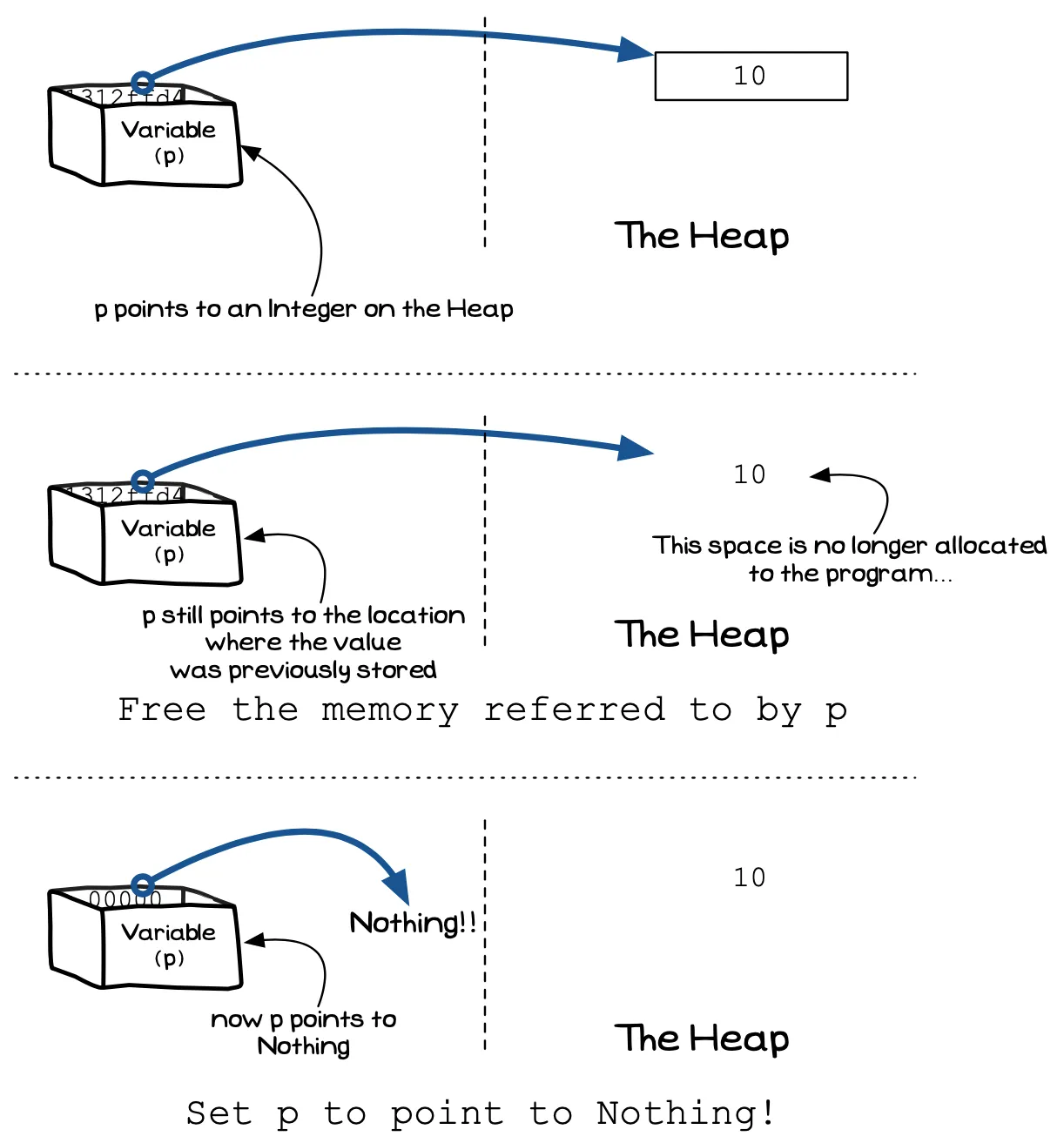Freeing Memory Allocation
Dynamic memory allocation requires that you manage the memory you are allocated yourself. You ask to be allocated memory, and it is your responsibility to tell the operating system when you are finished with that memory. This is one of the main challenges of working with dynamically allocated memory. You need to take care to ensure that you do free the memory you have been allocated when you are finished with it, but at the same time you must make sure that you do not free the memory while it is still needed.

Free - Why, When, and How
If you have allocated memory using malloc, calloc, or realloc… you need to free it. One pattern is to allocate, use, and then free memory within the same function or procedure. That way you can ensure that things get cleaned up.
Otherwise you need to have a clear design that lets everyone know when and why things are allocated, and what keeps them around. Most modern languages have moved away from you having to do this yourself, and they take care of these actions behind the scenes. Doing this yourself is great, as it will help you think about how memory is allocated even when you do not need to do it manually.
In C/C++
When you allocate memory you are responsible for freeing that memory when you no longer require it. The free function allows you to do this.
| Function | Required Arguments | Returns | Description |
|---|---|---|---|
free | the pointer to free. | void | Returns a previous heap allocation to the operating system so it can allocate that space to others. |
Have a look at the previous examples which all include the use of the free procedure. Notice how we have set the freed pointer to refer to NULL immediately after freeing it. This helps ensure that you do not accidentally try to read a value via the pointer after it has been freed. Once you free the memory, it is no longer yours to use.